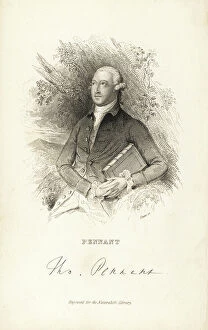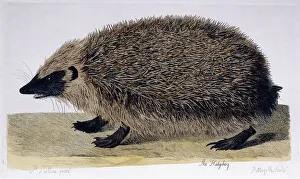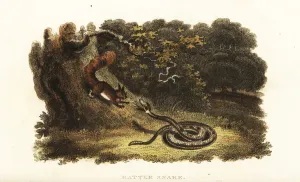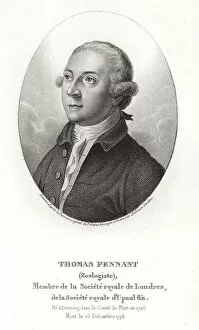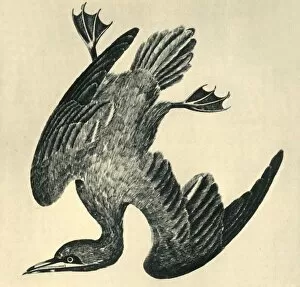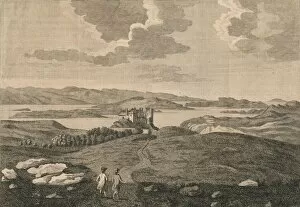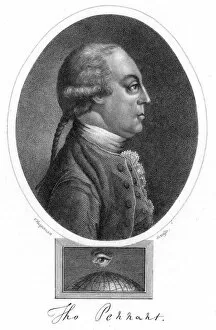Thomas Pennant Collection
Thomas Pennant, a Welsh naturalist and topographer, was an influential figure in the 18th century
All Professionally Made to Order for Quick Shipping
Thomas Pennant, a Welsh naturalist and topographer, was an influential figure in the 18th century. Known for his extensive travels and writings on various subjects, Pennant's contributions to the field of zoology were highly regarded. One of his notable works was "The Hedgehog, " a hand-coloured etching from 1761-1766. This intricate artwork showcased Pennant's keen eye for detail and his fascination with the natural world. In addition to his scientific pursuits, it also had a talent for capturing portraits through engravings. His own portrait depicted him as a distinguished gentleman, reflecting his status as a respected scholar. Pennant's interest in wildlife extended beyond mere observation; he even encountered unique encounters such as witnessing a rattlesnake charming a squirrel down from a tree. These experiences further fueled his passion for studying animals and their behaviors. Amongst his many achievements, one cannot overlook Moses Griffiths' depiction of Gannet in 1799. This stunning illustration captured the beauty of this seabird species that fascinated Pennant during his explorations. Dunvegan Castle became another subject of interest for Thomas Pennant in 1774 when artist Peter Mazell created an exquisite representation of it. The castle's grandeur appealed to both historians and nature enthusiasts alike. Throughout history, wicker men have been associated with Druidic rituals involving human sacrifice. In one edition of "A Tour in Wales" by Thomas Pennant published in 1781, he documented this grim practice that shed light on ancient beliefs and customs. As time went on, Thomas Pennant continued to make significant contributions to the fields of naturalism and travel writing well into the early 19th century. His legacy lives on through numerous engravings depicting him as an esteemed British zoologist and traveler.

